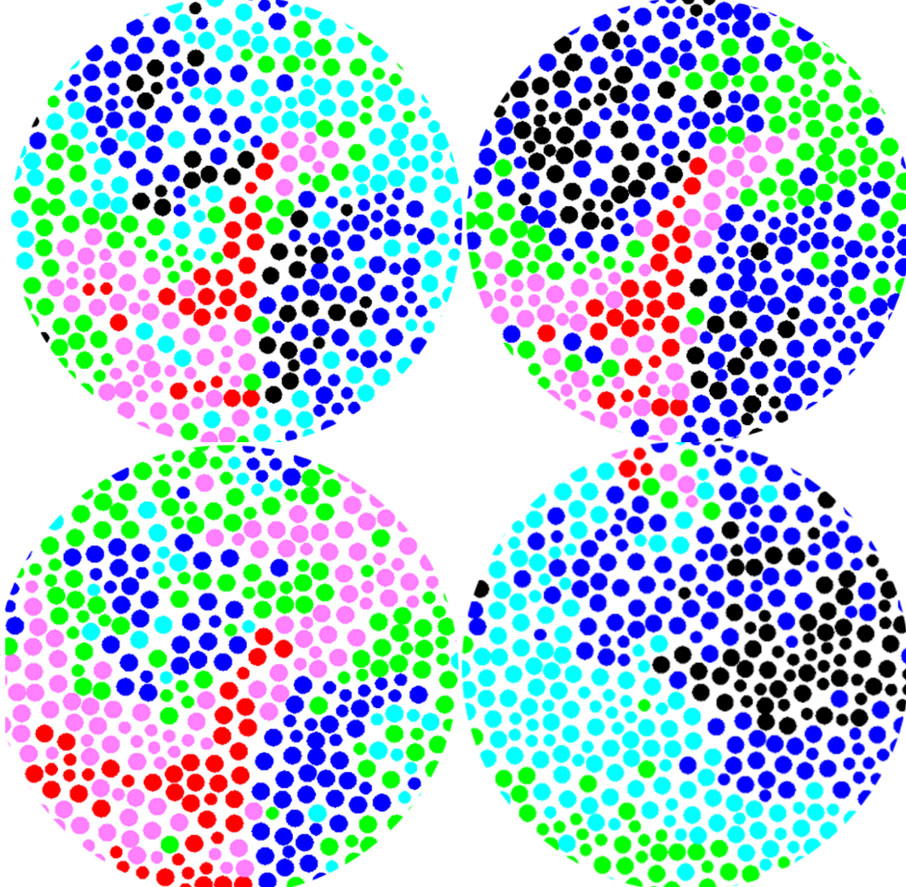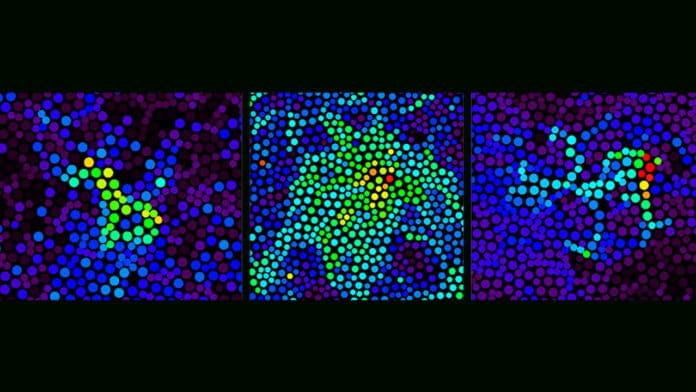Glasses see much incremental study but rarely a breakthrough, regardless of the endeavors from generations of scientists.
One central question in glass science is the cage formation process that gives the glassy materials their unique optical and mechanical properties.
An international team of researchers, affiliated with UNIST, testing the cage formation of the glass to explain the beginning of glass transition, reported that the onset of glass transition is a highly non-trivial process involving complex non-linear responses.
Scientists addressed the problem by locally exciting a colloidal glass using laser beams.
The development of the non-monotonic length scale results from the buildup of domains with cooperative dynamics that become increasingly rigid and dominate the particle dynamics. The cage formation is directly related to the merging of them.
Research Fellow Bo Li of the IBS Center for Soft and Living Matter at UNIST said, “The beauty of science here is that we can see how glasses germinate from the liquids microscopically.”
Professor Walter Kob from the University of Montpellier and Institute Universitaire de France said, “The simple physical picture of the enhanced cooperative dynamics for the non-monotonic response suggests the finding should be general. It’s amazing that the physical rule behind such rich dynamics is so concise.”
“Our findings in a well-defined model system will help better understanding other glassy or disordered systems like polymer, granular and atomic glasses, etc.”

Along with the non-monotonic behavior, scientists also extracted the scaling relation between the excitation pattern’s morphology and size. The deviation of this relationship reflects the degree of a material’s heterogeneity at a specific condition.
Other than its theoretical significance for physicists, this scaling law will intrigue chemists and material scientists by offering them a ”ruler” that guides the design and synthesis of glass materials.
Director Steve Granick (Distinguished Professor, Department of Chemistry) said, “Beyond enlightening the first step of glass transition, this proof-of-concept experiment paves the way for the fundamental understanding of glasses eventually. Using a laser as a lancet, a glass sample can be precisely anatomized. More and more exotic yet puzzling behaviors in glasses will be assessed in this way.”
Li said, “This work is motivated by the long-standing challenges in glass science. The sluggish and highly coupled dynamics always burry the key effect. If only I can shrink myself, jump into the system, and stir the surroundings.”
“Perhaps the laser is a good choice. The femtosecond holographic laser system originally developed by Lou perfectly satisfies the needs of the local excitation. Valuable theoretical support is obtained from Kob for refining the complex experimental observations into concise physical principles.”
“The highly interdisciplinary environment in our center and successful international collaboration makes a once improbable brainstorm real.”
Director Granick and Kob concluded: “The field of glass science, being classic but constantly challenging, is promoted by these experiments that elucidating the onset of the glass transition. The conceptual importance of cage-formation for the properties of glassy materials is revealed. And the micro-rheological approach taken here opens the door to the thorough understanding of the glasses one day.”
Journal Reference:
- Li, B., Lou, K., Kob, W. et al. Anatomy of cage formation in a two-dimensional glass-forming liquid. Nature 587, 225–229 (2020). DOI: 10.1038/s41586-020-2869-5
